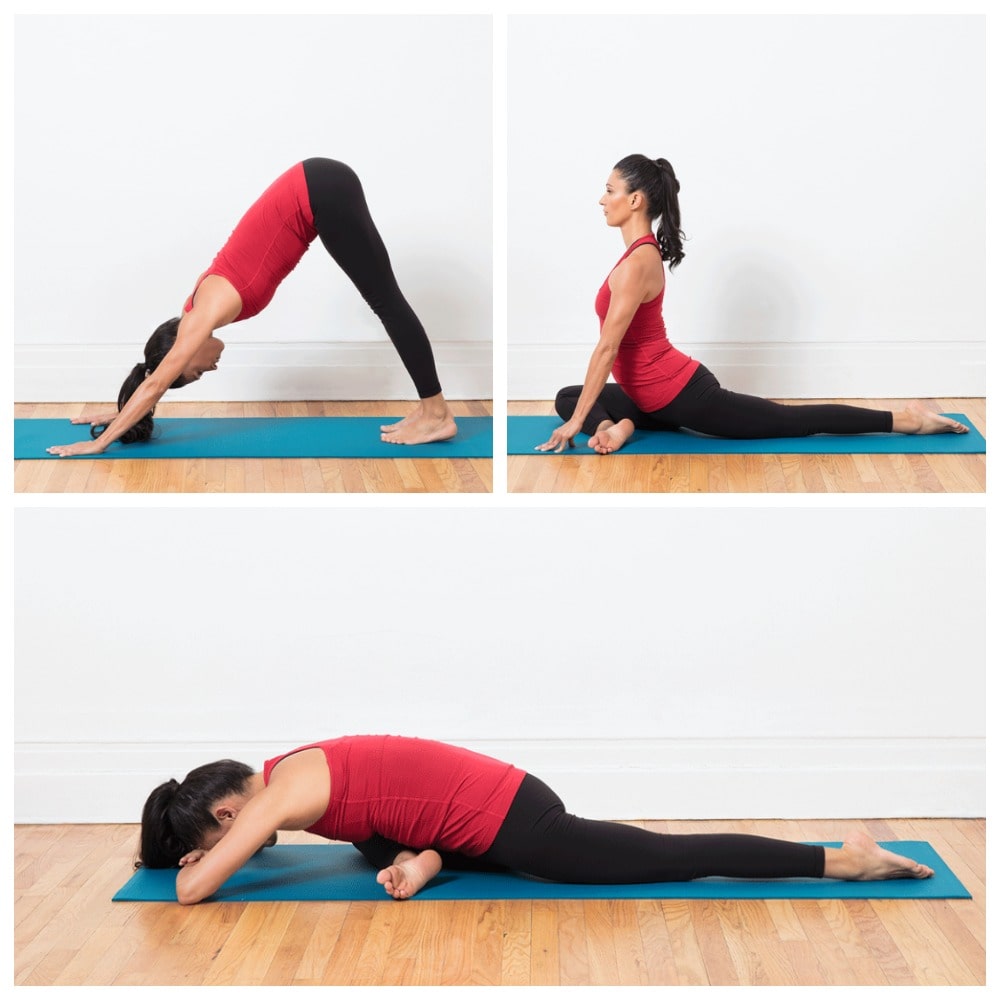

If you’re new to yoga, or pigeon pose, in particular, be sure to take your time. The stretching and meditative components make this form of exercise one of the best there is. Yoga is a great practice for both body and mind. Simply place one of these items underneath your buttocks while in the stretch to decrease the difficulty.
#Pigeon stretch free
Naturally, if the pigeon pose is too much for you as described, feel free to modify it! The use of pillows and/or yoga blocks during this stretch makes it much more comfortable. Repeat the same stretch on the opposite side.Hold this position for 30-60 seconds, or for 10 very deep, slow breaths.After a few deep breaths, attempt to sink further into the stretch by reaching your arms forward and allowing your chest to lower toward the floor.At this point, your right knee should be pointing directly to your right side, and your right ankle should be pointing directly to your left side.Next, slide your left knee as far back as you can, as you continue to inch your right ankle forward.Slowly, bring your right ankle forward and place it on the floor in front of your left knee.Start in quadruped (both knees and both hands on the floor).Furthermore, there are tons of variations that can be made to pigeon pose to make it easier or harder. Pigeon pose serves as a hip flexor stretch, a hip rotator stretch, and an all-around excellent choice for encouraging flexibility in the lower body. There are so many great yoga poses, it’s hard to choose just one! However, to isolate the hips, I tend to lean toward the pigeon pose. However, when it comes to the very specific issue of tight hips, yoga is king. Walking, jogging, biking, and weight lifting are all great items that should be added to our routines. In general, we all need to move a little bit more to improve our posture and hip flexibility.

When we spend the majority of our lives sitting, we force our hips into a specific position that tightens our hip flexors and weakens muscles all throughout our bodies. The only problem is that most of us rarely participate in any activities! This time off of our feet gives us a chance to rest, recover, and get ready for our next activity. Bring your right ankle over your left knee, keeping. From time to time, we should all plop down and rest. Sit with your knees bent, feet flat on the floor, arms behind you for support. There’s nothing inherently wrong with sitting. Think about it: we sit on the way to work, we sit when we get to work, we sit on the way home, and we sit when we get home. The majority of us spend many more hours sitting and barely moving than we spend in any other position. Unfortunately, the modern lifestyle lends itself to muscular tightness all throughout the body. Tight Hips and The Epidemic of Sitting Credit: Specifically, one of my favorite yoga exercises to loosen restricted hips is the pigeon pose (AKA half pigeon pose). Luckily, the cure for many cases of tight hips can be found through yoga practice. Tightness in this area can cause back pain, weakness, and a generally decreased quality of life. That being said, general hip inflexibility is also a glaring issue in the average person. Granted, tight hamstrings can lead to tons of painful conditions and injuries.


 0 kommentar(er)
0 kommentar(er)
